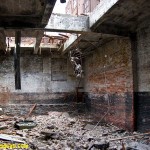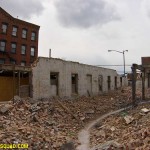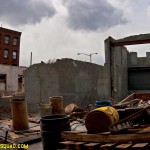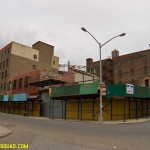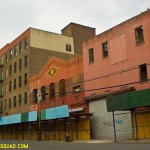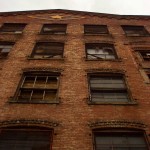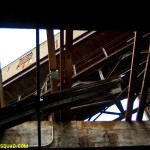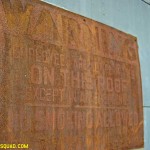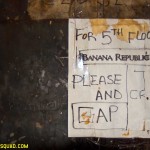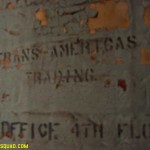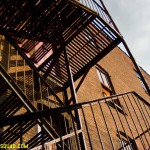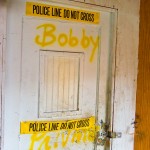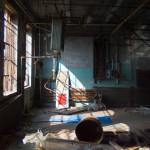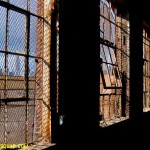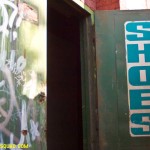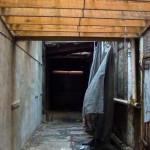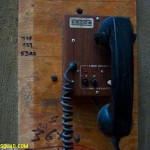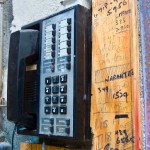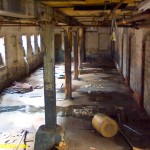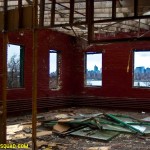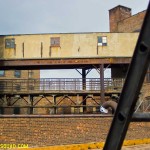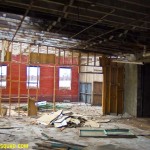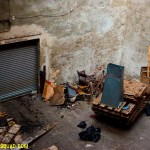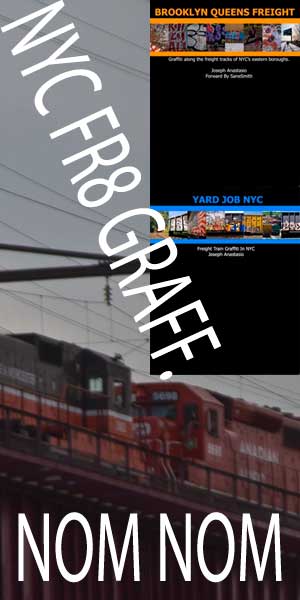Faber Pencil Factory
March 4th, 2007 by Bad Guy JoeIn 2007, 2 buildings which were once part of the Eberhard Faber Pencil company in Greenpoint were demolished, and a third was converted to condos. Here is a look into all 3 just as they were being demoed/renoed.
The loss & conversion of these buildings resulted in the NYC Landmarks & Preservation Council's creation of the Eberhard Faber Pencil Company Historic District - which is comprised of all the remaining pencil factory buildings.
History
The Eberhard Faber Pencil Company, originally the A. W. Faber Company, was founded by Eberhard Faber (1822-1879) in 1861. Following a disastrous fire at the Manhattan plant in 1872, Faber moved the factory to Brooklyn, where it remained until 1956. The company is credited with bringing German lead pencil-making techniques to the United States and Faber grew to become one of Brooklyn’s most important factories, employing hundreds of workers, most of which were women. In addition to mass-producing low-cost pencils, the Brooklyn plant made pen holders and related stationary items.
Most of the buildings in the historic district date from the mid-1880s to the 1910s and were designed to complement the earlier structures, displaying elements of the German Renaissance Revival style, such as segmental lintels, carefully detailed brickwork, and corbels, as well as pedimented parapets that display Faber’s star and diamond motif.
Not only did the company become a significant presence in Greenpoint, occupying two square blocks, Eberhard Faber would also turn into a nationally recognized brand name. Furthermore, in an early example of corporate branding, many of the Eberhard Faber buildings prominently display a star-and-diamond motif on their pedimented parapets in order to establish visual continuity across blocks. Built over several decades, these buildings provide a concise history of the development of industrial architecture in Brooklyn, as well as one company’s rise to national prominence.
The industrial base of the Greenpoint neighborhood diminished after the Second World War, and the Faber pencil plant closed in 1956 with most of the company’s operations moving to Pennsylvania. The Brooklyn buildings were subsequently sold to investors. In 1988, Eberhard Faber was acquired by the A.W. Faber-Castell Corporation.
Getting In
Sneaking into this place could not possibility have been any easier. West street is usually pretty quiet, and the minute the plywood construction fence & scaffold went up, all of the doors to the street were left wide open behind it. The buildings themselves were in great shape given their age, and the only real hazard came later when demotion crews were making a mess of the place.
Today
The smaller buildings on the south corner of the block were completely destroyed. They were replaced, of course, with a truly vile looking modernist building that is completely out of character with it's neighbors. The building on the northwest corner were, however, more or less preserved with a very ugly additional top floor added (again, completely out of context with not only it's neighbors, but the rest of the building). The listing for apartments in these buildings reads as follows:
The Pencil Factory, originally built in 1872 for the Eberhard Faber pencil company, is seamlessly integrated into Brooklyn’s Greenpoint waterfront. Linking the past with the present, residents are offered high design integrity and a host of modern amenities: common roof deck, fitness center, on-site parking, bike & residential unit storage, E-lobby doorman system. From considerable ceilings above to oak hardwood floors below; homes feature a clean, tailored, aesthetic and an abundance of space. Each home hosts a washer and dryer and GE stainless steel appliances in sprawling open kitchens. Bathrooms offer a serene environment with floors and walls wrapped in porcelain tile and feature deep soak tubs.
To call it a seamless integration could not be further from the truth. While the original northern factory building does likely date back to the 1800s, the new modernist building is brand new (built in 2009).
With their conversion to residential use, NYC has lost another set of abandoned industrial buildings.
(Originally posted Mar 4, 2007 @ 20:16, Edited & added larger photos March 25, 2013.

